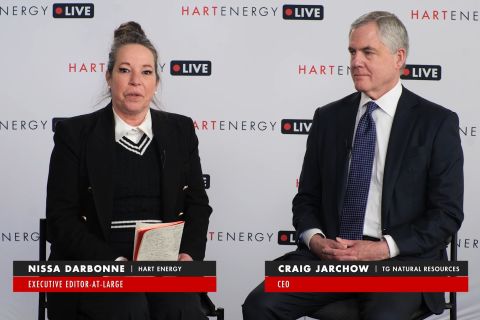By Patrick Leach, Decision Strategies A few years back, I designed a simple spreadsheet tool for an oil and gas client to use in specific circumstances. This circumstance arises when the company is drilling a well and gets something stuck way down in the hole (often several kilometers down). At that point, the company usually tries to fish it out using a tool specially designed for the purpose. The problem is 1) such fishing expeditions often fail— i.e., the tool fails to grab a hold of whatever is stuck, and 2) you don’t get to find out that it failed until after you’ve pulled the fishing tool all the way back to the surface. The round-trip time to go in, try to grab and come back out can be a full day or longer, depending on how deep the hole is. And if you’re offshore in deep water, each day of rig time can cost about a million dollars. If your first attempt fails, you can always try again. And again. And again. But at roughly a million dollars per try, the costs mount fast. If and when you become convinced that further attempts are futile, you fall back on Plan B: you plug the bottom part of the hole with cement (abandoning whatever it is that’s stuck), pull back, and “sidetrack”—i.e., you drill around the plug you just made. This usually involves putting an extra string of steel pipe into the well, and settling for a smaller well diameter from that point forward. It’s generally much more expensive than fishing the tool out, which is why you try fishing first. Once you get into the cycle of repeatedly attempting Plan A (fishing), it becomes one of those areas where human psychology runs rampant. Everybody on the rig gets up every day thinking, “Today we’re going to fish that thing out of the hole!”regardless of how many times they’ve already tried and failed. Nobody wants to give up. The result is often a huge loss to the company as the crew wastes days or weeks of rig time in repeated attempts at Plan A before finally conceding defeat and proceeding with Plan B. So the question is: How many times should you try Plan A (fishing) before giving up and implementing Plan B (sidetracking)? The correct answer, of course, is that you should give up on Plan A when the average cost of continuing with Plan A becomes worse than the average cost of implementing Plan B (recognizing that if Plan A repeatedly fails, you have to go with Plan B anyway). But that will be heavily dependent on what the probability of success for Plan A is on any given day. How do you arrive at that? This was where the “Fish or Cut Bait” tool came in (as we came to call it), and its success comes not from fancy math (there isn’t any), but rather from getting people to reframe their thinking. Instead of asking what the probability of success for Plan A will be on any given day, the tool asks for just two probability inputs: 1.What's the probability that Plan A will never work, regardless of how many time you try? 2.What's the probability that Plan A will work on the very first try? These are numbers which people often have a feel for—much more so than trying to predict success on any given day. Reframing the question in these terms makes it much easier for people to get their heads around the problem. From that, the tool uses other inputs (the time and cost required for each attempt at Plan A, and the cost of Plan B), as well as one key piece of logic which I got from interviewing drilling engineers: in general, if Plan A fails today, its probability of success tomorrow goes down. Occasionally we might learn something today that causes the probability of success to go up, but that’s the exception, not the rule. This rule, plus a few simplifying assumptions, enable the tool to come back with a definitive number of attempts to make at Plan A before giving up and going with Plan B. This number should be taken with a grain of salt—no tool’s output should be accepted as The Truth—but it’s a good starting point for discussion. More to the point, even though the tool was designed for the specific case of having a piece of equipment stuck in a well, the concept is generic. We sometimes find ourselves in situations where we can keep trying over and over to fix something at a modest cost—and those attempts may or may not work—or we can give up on trying to fix it and do something else at a higher cost (replace it, go in a different direction entirely, etc.). In these circumstances, the Fish or Cut Bait tool might be useful. And even if it isn’t, simply reframing the problem in a way that allows us to see things more clearly is often a huge step toward finding a good answer. P.S. You can download the Fish or Cut Bait tool on the Decision Strategies website at http://www.decisionstrategies.com/toolbox/ Patrick Leach is CEO of Decision Strategies. This blog post originally appeared on Decision Strategies’ website.
Recommended Reading
Sold in 66 Days: Inside the Diamondback-Endeavor Deal
2024-03-26 - Diamondback Chairman and CEO Travis Stice first offered “at least $25 billion” for Endeavor Energy Resources on Dec. 8. The deal closed just weeks later for $26 billion.
Marketed: KJ Energy Operated Portfolio in East Texas
2024-04-16 - KJ Energy has retained TenOaks Energy Advisors for the sale of its operated portfolio located in East Texas.
Marketed: Team Operating Gulf Coast Opportunity
2024-03-19 - Team Operating LLC has retained PetroDivest Advisors for the sale of certain oil and gas leasehold and related assets spanning multiple counties in Texas, Louisiana and Mississippi.
The Answer to Curbing Permian Associated Gas? More M&A
2024-04-03 - Consolidation will result in less oil production, and therefore less associated gas, as fewer wells are produced, an energy analyst says.
Exclusive: Is TG Natural Resources Looking to Snap Up More?
2024-03-27 - At Hart Energy's DUG Gas+ Conference and Expo in Shreveport, Louisiana, TG Natural Resources' President and CEO Craig Jarchow said the integration of the Rockcliff Energy acquisition is well underway and that "being acquisitive is certainly" in the company's future.



